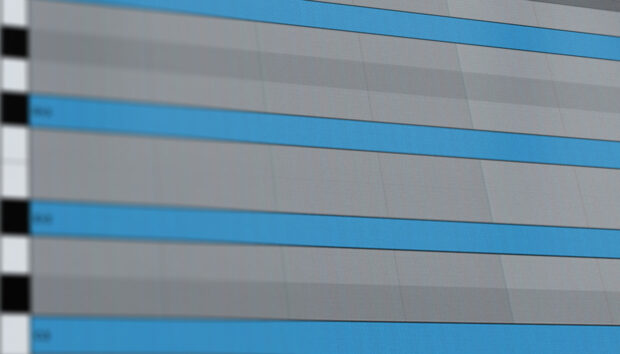
Placebo’s unsung hero Bill Lloyd plays an invaluable role in the band both live and in the studio, where he’s a strong advocate of using GUITAR RIG and Native Instruments plugins.
Every rock band needs a good tech guy, and Placebo has certainly been grateful over the past 20 years for the contribution of William Lloyd. The former member of Faith Over Reason has been an integral member of the alternative Brit rock giants, not just plugging holes in the studio but coming up with creative ideas and on-stage technical solutions.
Lloyd joined Placebo in the early-‘90s as a roadie, but as the band became increasingly reliant on his expertise, his role evolved far beyond that. Today, he not only serves as their technical advisor, but strategizes their transition from studio to stage, where he also plays bass and keyboards.
We caught up with Bill at the O2 Brixton Academy during Placebo’s latest round of UK concerts, as he further explained his creative and technical role in the band.
A chance meeting
I first met Brian Molko at the Edinburgh festival in 1993. I was supporting Jeff Buckley with my first band Faith Over Reason and he was helping his friend from The Kills with some crazy off-hinge theatre production. I met him in the pub, got chatting and thought he was interesting. I was also working for a record company at the time, so asked Brian to send me a demo tape of him, Stefan Olsdal and their original drummer. It had four or five tracks on it and I was immediately blown away; it’s how Placebo got their first management deal.
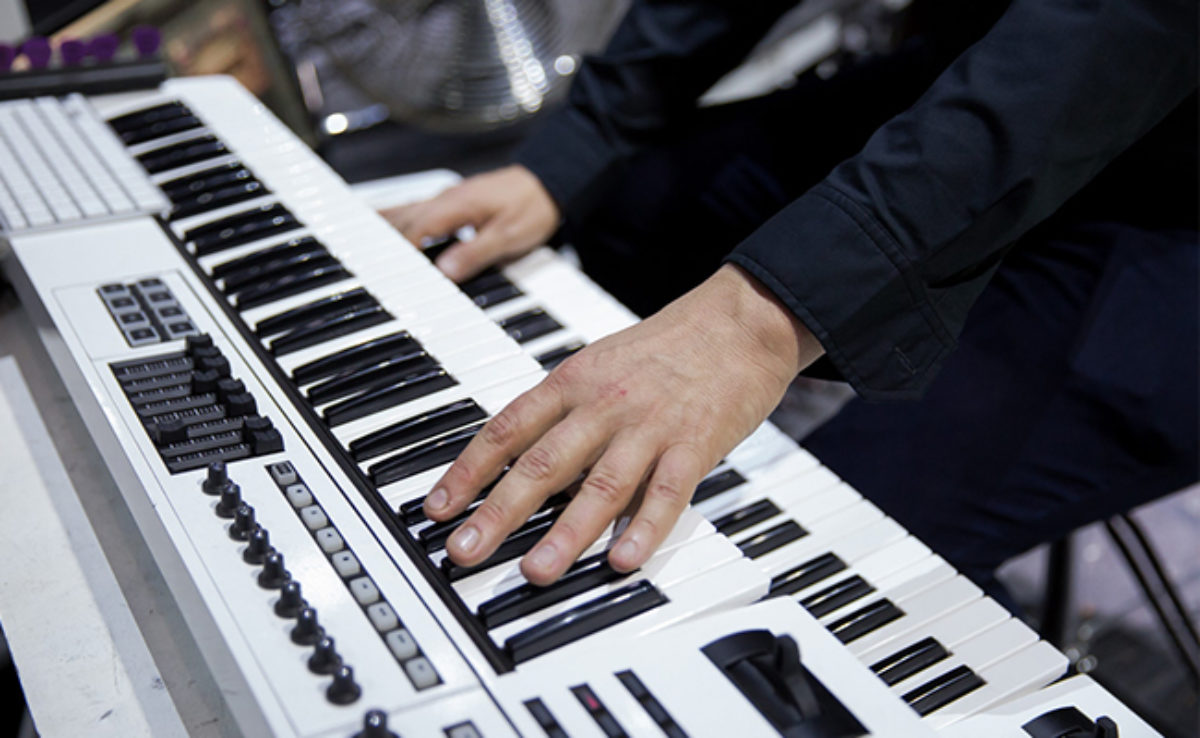
Because they were very inexperienced and didn’t really know anything about gigging, I started driving them around, helping them to get some equipment together and did their sound. As the band developed, I became Stef’s tech and did a tiny bit of programming. I delivered the gear for the first two album sessions, but didn’t stick around much for Without You I’m Nothing because the producer just wanted to crack on with it.
I came back during the last week just to hang out with the boys and pick the gear up, and that’s when they told me that they wanted me to play live with them. Basically, there were a lot more parts on the new record and they couldn’t do it with a three piece, so I started playing bass and keys on the second album tour. At first, I used to play behind the cabs because they wanted to keep it to three members on stage [laughs], but after a while they said, no it’s silly, come on stage with us.
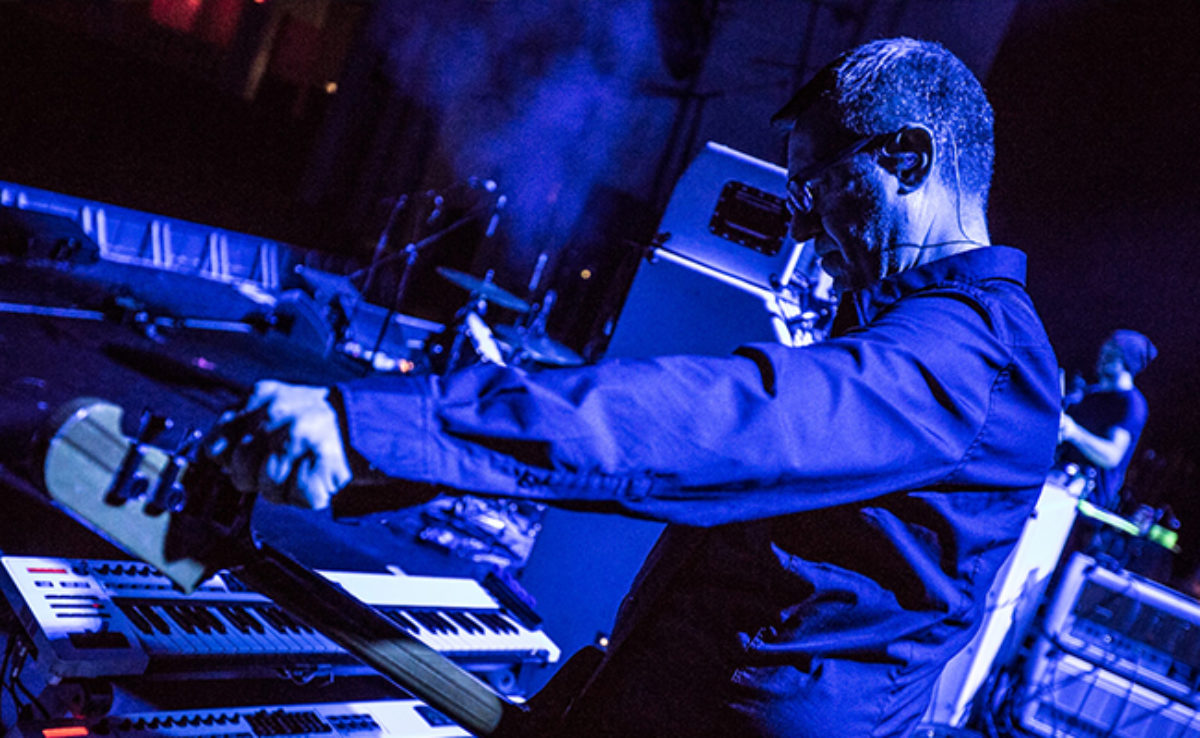
An interest in sound
I was always interested in sound. At school I did the sound at plays and productions and started to learn about it. I bought some amplification gear so my band could rehearse and used to get involved in the mixing and recording using a basic four track. I also got into synthesis at an early age. I liked a lot of the early ‘80s synth bands like Depeche Mode and OMD, but also hip hop and rock. My first synth was a MiniKorg-700S, which I bought for £50, although it’s probably worth a grand now. It was analogue, very simple and had what’s called a ‘traveler’ so you could do swoops. It was fun, and a great way to learn.
Writing with GUITAR RIG
I get involved in the writing sessions, especially in terms of recording and mixing. I also do some guitar programming, help them get sounds together and take notes on how the sounds were created and what pedals we used. We use Guitar Rig a lot for guiding the guitars, so I’ll set that up and programme them ready for recording. When the producer and engineer get involved, I’ll let them get on with it, but I’ll still be alongside the boys setting up pedals and dialling up sounds. They’re quite particular and like to get hands-on with everything, but they’ll usually ask my advice on a few things.
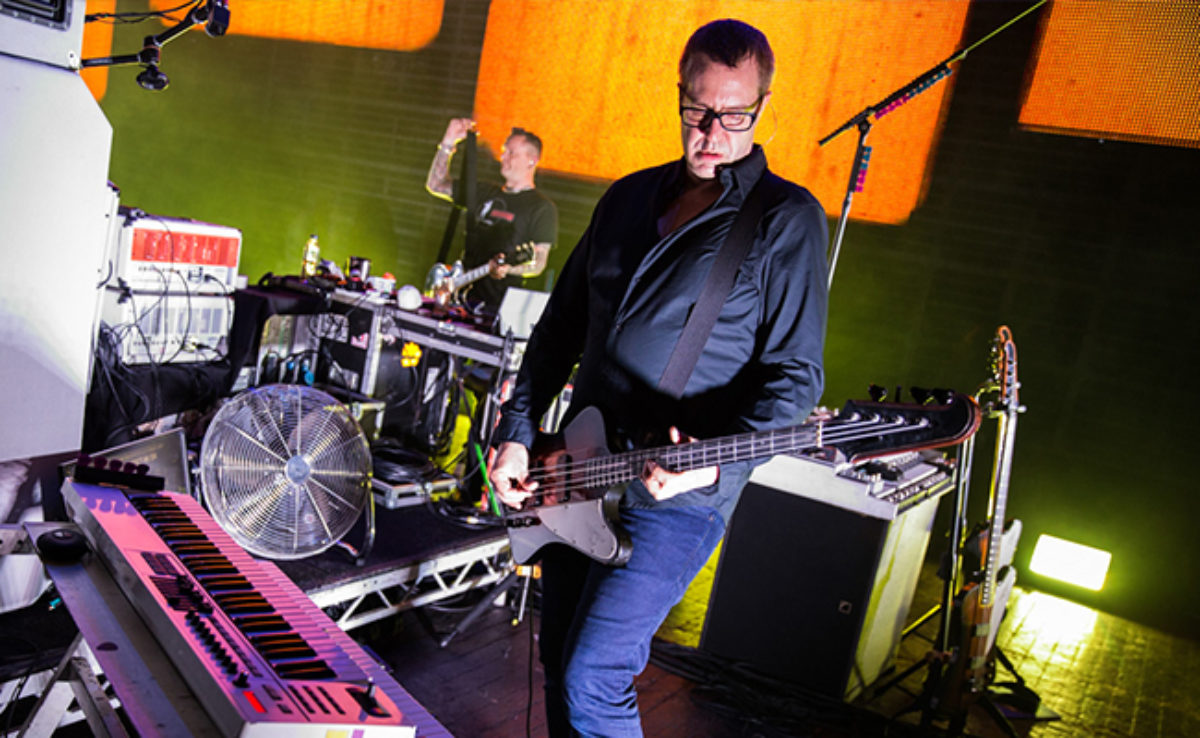
The studio environment is perfect because you want the recording to be as clean as possible. It’s very rare that you’ll find studios with decent isolation booths, so we’ll track everything and get the drums down first with Guitar Rig guitars, so there’s no bleed on the drums and it’s all coming direct into the headphones.
Guitar Rig has speaker simulations, so you can create a bit of air and it really works a treat. It’s got its own guitar patches, but you can plug the guitar in and it will emulate speaker cabs, pedals and amplifiers – or any combination. It’s very rare that what we do on Guitar Rig actually ends up on the record, it’s just a guide, but it creates a real intensity and the vibe of playing through a big rig, even though you’re just playing through a computer.
Going full electronic
There are a few songs on the new album that are more electronic rock-orientated, but the blend’s good I think. The song “Exit Wounds” starts with samples, loops and crazy noises, but when the guitars kick in it lifts it into the rock world.
Nobody knows where we’ll take the music in the future. I just bought a Roland modular synth because the boys are quite keen on dirty synth sounds at the moment, but whether it gets on the record, who knows?

Morphing from studio to live
That’s the main part of my job really. I don’t really think about that side of it much while we’re recording because we just want to concentrate on making the record, but when we come towards the end of an album session, or during mixing, I’ll start thinking about how I can translate the songs to the live arena.
The boys give me free reign to consider what samples to use and whether we’re going to play them live as a long sample or chopped up. We prefer to play live as much as possible and don’t like to track anything, but we’ll bring clicks and loops in and out and I‘ll play some loops as well. Brian doesn’t always like to come in at the same spot every night and sometimes waits a bit to add dramatic impact, so we like to keep everything flexible.
Preparing samples for a tour
There’s always been synths, pianos, loops and samples on all the records. Maybe not so much on the first album, but we play a couple of songs from that on this tour so I sampled sounds from the original and augmented them with digital samples and emulations. From the second album onwards, there’s always been lots of loops and samples. Even the drumming tracks have some studio trickery, but we try to keep everything as live as possible.
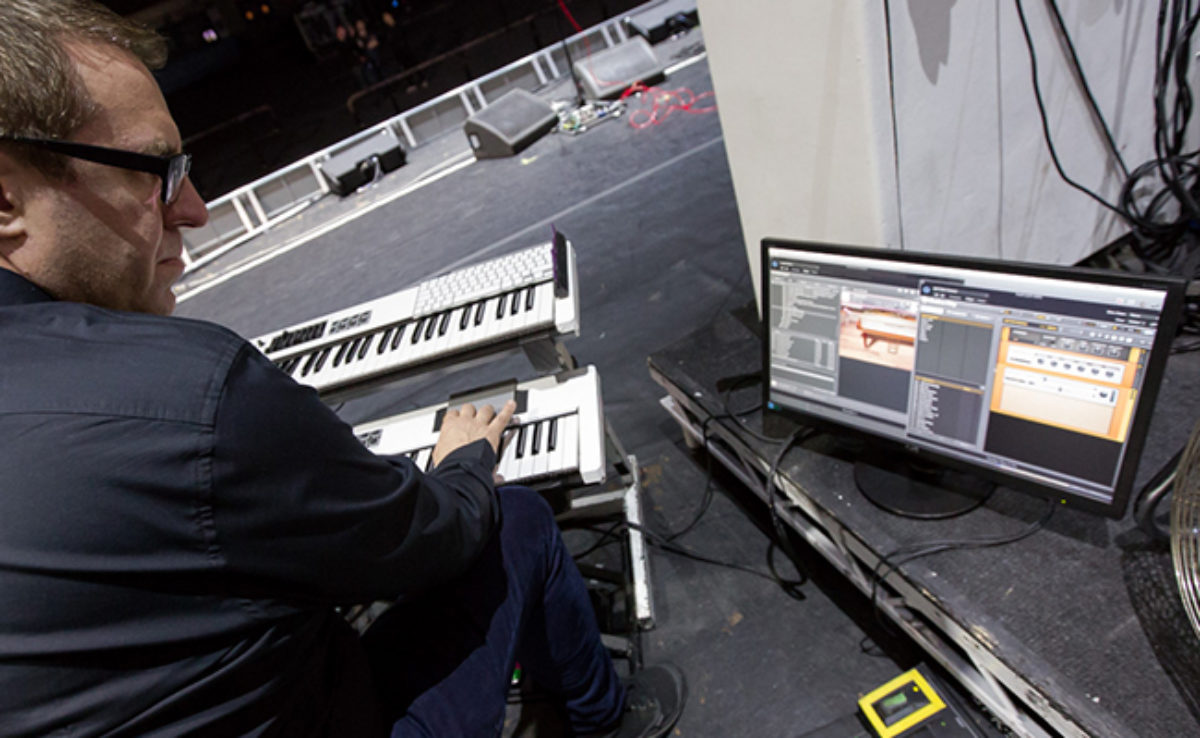
I do most of the programming at home. I’ll usually take the studio sessions and start looking at them, chopping up the obvious bits straight away. Then we’ll get together for a pre-tour, pre-production session in a small studio. We’ll get a block booking, and while the boys relearn how to play the stuff live, I’ll be throwing in the samples and loops to see what works.
If a track has a loop in it, I’ll always make sure the loop is ready to go and clicked up for the drummer, and if there’s a lead line that’s really particular to a song, I’ll make sure that’s ready to go too, but I’ll also throw in atmospheres, re-programme sounds on-the-fly and add in a bit of distortion or speaker emulation, again using Guitar Rig, which we use quite a lot because it makes the samples a bit dirtier and more real-sounding.
Using GUITAR RIG live
Between 50 and 70% of the bass playing is done live, but we’ll use Guitar Rig live for emulation to make the samples sound a bit more gritty with some air around them so they’re a bit less clinical-sounding. I use the Leslie Amp in Guitar Rig quite a bit because it adds distortion on a couple of key tracks. It’s basically a Hammond organ speaker cabinet that has a rotary effect, and it’s brilliant. I think Guitar Rig sits better with guitar music. Pop music is more clinical and the punters don’t care about what sounds you use, but in rock it’s good to be a bit more individual and use a programme that sits well with the guitars and can dirty stuff up a bit.
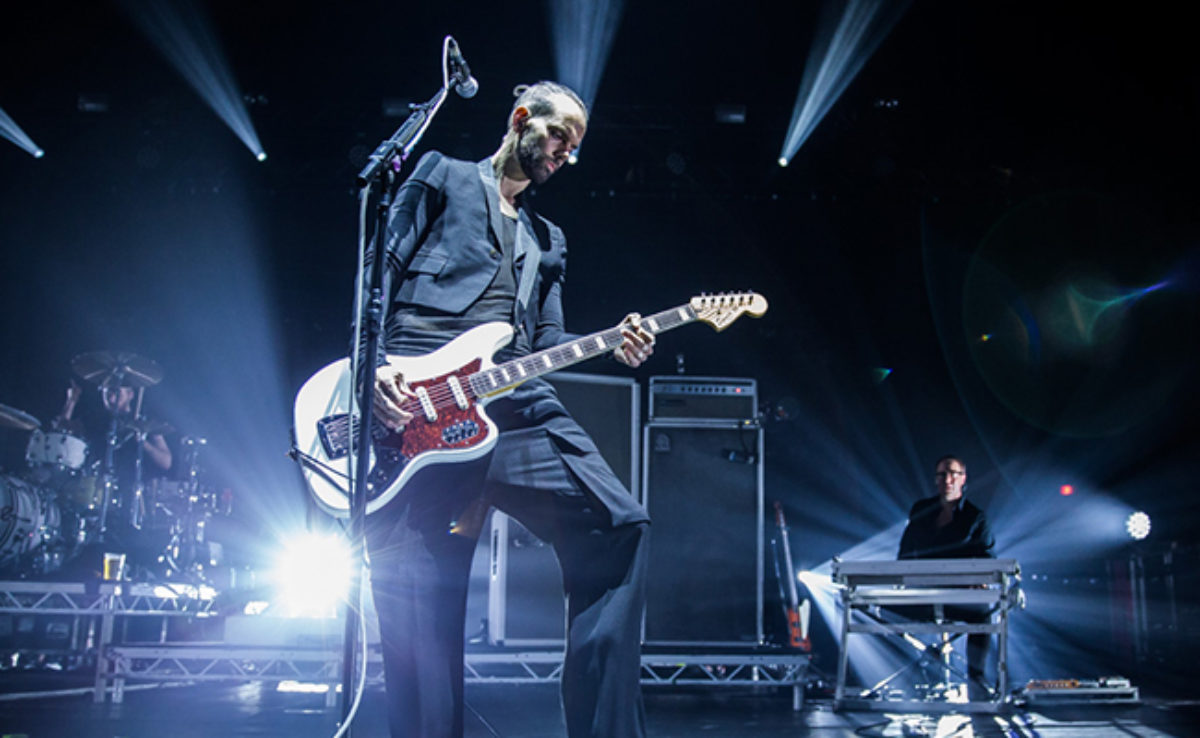
MASSIVE and KOMPLETE in mainstage
We use Mainstage live, because it’s like a big mixer. It hosts all the soft synths and samples and you can actually play samples from it, although I’ll normally do that within the Logic ESX24 sampler or use Kontakt. Because we use 14 channels of samples, Mainstage is great for mixing all of those, sending them and adding effects. Being a fan of ‘80s reverbs, I love Komplete’s RC48 reverbs, which I use a lot. I’ll also bring in Logic delays, Massive, and third-party plugins like Sylenth and assign them to different channels.
The layout on Mainstage is great. You can do keyboard layering, key zones, all your mutes, and see them really clearly. We’ll use Massive for some of the lead synth sounds because they work brilliantly. The guy who assisted the producer on our last album always tells us to go straight to Native Instruments when starting a mix. In fact, I just did a mix for TV and ended up using NI plugins for most of it. When we’re on the road, we might do a TV or radio show and we’ll often prefer to do our own mix. I’ll get a raw live feed from the front of house and use NI plugins for filtering, reverb and compression. I especially love NI’s SSL emulations; they’re fantastic.
ALICIA’S KEYS
Although we use real pianos on the album, Alicia’s Keys software does a lot of the piano emulations live. We’ve recorded some fantastic pianos in the studio using a great Yamaha rack, but the software is getting quite close now. Unless the listener is a real nerd, they’re not going to pick up on the difference.
We’re controlling Kontakt with Roland pianos, which have their own sounds anyway. You can’t replicate the feel of a piano and how it reacts to being played, but Alicia’s Keys is close enough. We tested it against other software companies and it came out on top. It sits well with everything and reacts really well live.















